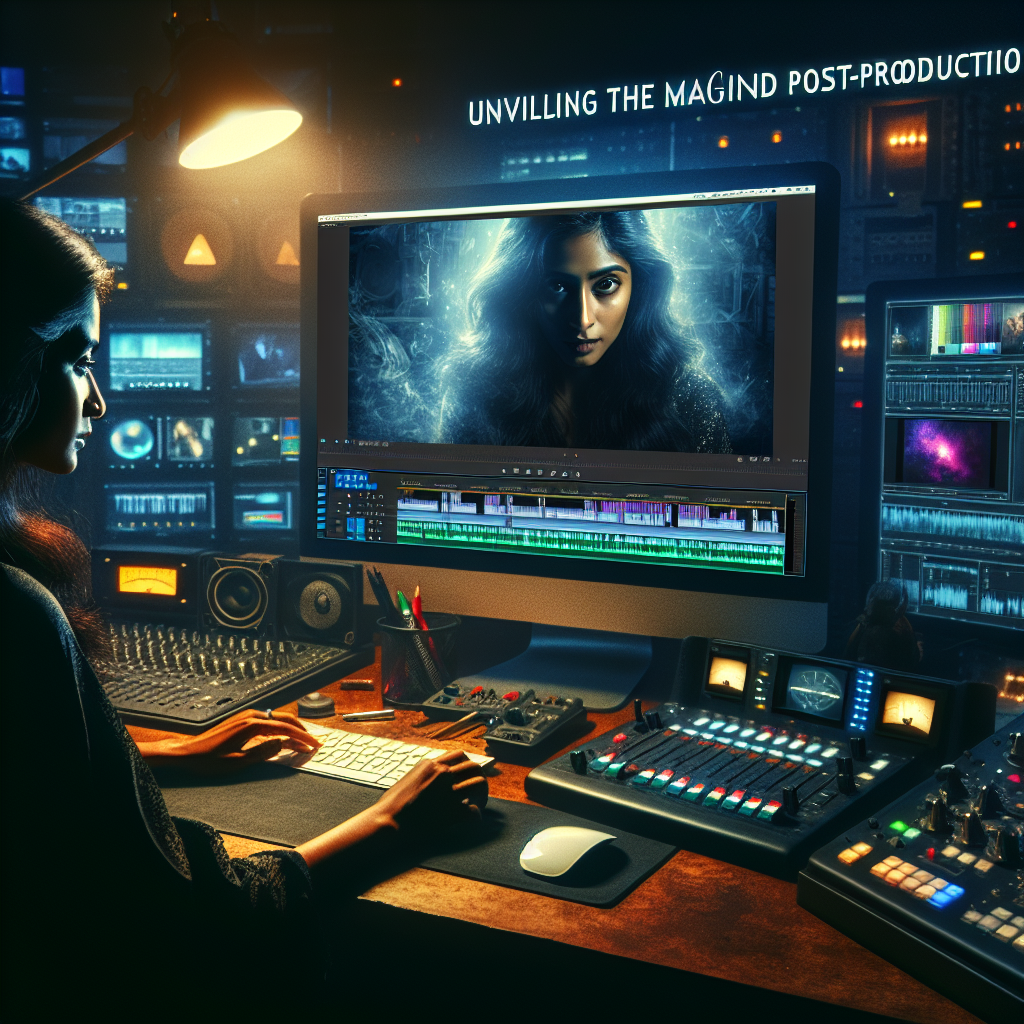As most of us consume our entertainment and media in the form of cinema and television, we have become familiar with effects such as sound effects, special effects, and the overall quality of voice over. Yet, few of us grasp the immense effort and complexity involved in making everything look so seamless. This mystery process, referred to as post-production, plays an essential role in harnessing the raw materials – footages, audio, and visual elements – that, when combined, create the magic of film.
What is Post-Production?
Post-production is one of the final stages in a film or television production workflow. The process involves multiple stages – including editing video footage, sound design and editing, music composition and recording, special VFX (visual effects), color grading, and transcoding for different distribution channels. The goal of this series of tasks is to maximize the narrative and aesthetic potential of the film in its final presentation.
The Power of Editing
The first step in the post-production process is editing. The editor’s task is to sort and arrange raw footage into a coherent, compelling story. In essence, the film editor is the ultimate gatekeeper, deciding what stays in the final cut and what gets voraciously tossed on the editing room floor. Film editing is truly an art form, and a critical component of the filmmaking process.
Sound Design & Editing
Often overlooked, yet equally essential, is the sound design and editing process. Here, all the sound elements of the film including dialogue, sound effects, ambient noise, and the score are recorded, edited, and mixed. Using sound creatively can enhance the atmosphere of a scene, heighten tension, or provide essential clues to the viewers.
Visual Effects (VFX)
In post-production, filmmakers have the opportunity to create spectacular, larger-than-life scenes using the magic of visual effects (VFX). From transforming mundane backgrounds into fantastic landscapes, conjuring up a horde of mythical creatures, to recreating historical cities, VFX artists employ a range of tools and techniques to bring directors’ visions to life.
Color Grading
Once the film has been edited and the special effects added, it goes through color grading. This process manipulates the color and tone of video footage to enhance the atmosphere and mood of the film. Explore the art of color grading and you’ll get a glimpse of how adjustments in color can greatly influence the viewers’ emotional response.
The Magic of Post-Production
The magic of post-production lies in its ability to weave together various elements into a cohesive, emotionally impactful narrative. While it can be time-consuming and filled with numerous challenges, the result can transform the raw footage into something that transcends the sum of its parts. With the right tools, skills, and creative vision, the post-production process can truly create magic.
Conclusion
The process of post-production is an art form all its own. The ability to shape raw footage into a compelling narrative, masterfully manipulate sound, create stunning visual effects, and conjure mood through color grading is truly magical. Each step is a crucial aspect of filmmaking that contributes to the final product’s ability to captivate and move audiences. This unraveling of the mystifying process serves to highlight the incredible importance of post-production in the world of cinema.
FAQs
-
What is the importance of editing in post-production?
In post-production, editing is crucial as it forms the narrative structure and pacing of the film. It allows the story to flow smoothly and builds the narrative’s tension and resolution.
-
What is the role of sound in post-production?
Sound plays a major role in setting the mood, creating the atmosphere, and supporting the storytelling in a film. It includes dialogue, sound effects, background noise, and music score.
-
What does a VFX artist do in post-production?
A VFX artist uses computer graphics and special effects software to add visual elements that can’t be captured during shooting. This can range from creating fantasy creatures to altering backgrounds and landscapes.
-
What is color grading in post-production?
Color grading is the process of altering and enhancing the color of a motion picture, video image, or still image. It is used to elicit certain emotional responses, enhance narrative beats, or articulate character development.
-
Is post-production important?
Yes, post-production is crucial as it brings all the elements of the film together, fine-tuning the work done in the pre-production and production stages. It completes the filmmaking process and ensures that the final product is a polished, cohesive film ready for its intended audience.

